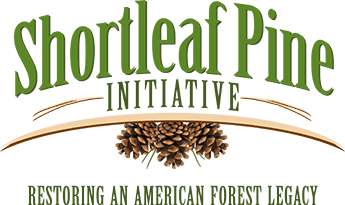|
Shortleaf research, newspaper articles, fact sheets, conference proceedings, literature reviews, and brochures.
Literature LibraryShelton, M. G., & Murphy, P. A. (1997). Understory vegetation 3 years after implementing uneven-aged silviculture in a shortleaf pine-oak stand. Southern Forest Experiment Station, Research Paper SO-296. Retrieved from http://www.srs.fs.fed.us/pubs/144  Uneven-aged silviculture for the loblolly and shortleaf pine forest cover types
Uneven-aged silviculture for the loblolly and shortleaf pine forest cover types
Baker, J. B., Cain, M. D., Guldin, J. M., Murphy, P. A., & Shelton, M. G. (1996). Uneven-aged silviculture for the loblolly and shortleaf pine forest cover types. Southern Research Station, General Technical Report 118. Retrieved from https://www.srs.fs.usda.gov/pubs/gtr/gtr_so118.pdf  Using fire to restore pine/hardwood ecosystems in the southern Appalachians of North Carolina
Using fire to restore pine/hardwood ecosystems in the southern Appalachians of North Carolina
Vose, J. M., Swank, W. T., Clinton, B. D., Hendrick, R. L., & Major, A. E. (1995). Using fire to restore pine/hardwood ecosystems in the southern Appalachians of North Carolina. Proceedings: First conference on fire effects on rare and endangered species and habitats conference; 1995 November 13-16; Coeur d’Alene, ID; Fairfield, WA: International Association of Wildland Fire: 149-154. Retrieved from https://www.srs.fs.usda.gov/pubs/ja/ja_vose009.pdf Santos, M. J., Greenberg, J. A., & Ustin, S. L. (2010). Using hyperspectral remote sensing to detect and quantify southeastern pine senescence effects in red-cockaded woodpecker (Picoides borealis) habitat. Remote Sensing of Environment, 114(6), 1242-1250. Retrieved from http://www.sciencedirect.com/science/article/pii/S0034425710000313 Tiarks, A. E., & Baldwin Jr, V. C. (1999). Validation of Volume and Taper Equations For Loblolly Shortleaf and Slash Pine. Paper presented at the Tenth Biennial Southern Silvicultural Research Conference, Shreveport, LA, February 16-16,1999. Retrieved from http://www.treesearch.fs.fed.us/pubs/2138 Wells, O. O., & Wakeley, P. C. (1970). Variation in Shortleaf Pine from Several Geographic Sources. Forest science, 16(4), 415-423. Retrieved from http://www.ingentaconnect.com/content/saf/fs/1970/00000016/00000004/art00006 Cain, M. (2000). Vegetation composition five years after silvicultural treatments to control competition in a natural stand of loblolly-shortleaf pines. 2000 Proceedings, Southern Weed Science Society, Vol.(53). Retrieved from http://www.srs.fs.usda.gov/pubs/viewpub.php?index=9755  Vegetation-site relationships and fire history of a savanna-glade-woodland mosaic in the Ozarks
Vegetation-site relationships and fire history of a savanna-glade-woodland mosaic in the Ozarks
Jenkins, S. E., Guyette, R., Rebertus, A. J., Pallardy, S., Cecich, R., Garrett, H., & Johnson, P. (1997). Vegetation-site relationships and fire history of a savanna-glade-woodland mosaic in the Ozarks. General Technical Report-North Central Forest Experiment Station, USDA Forest Service(NC-188), 184-201. Retrieved from https://www.nrs.fs.fed.us/pubs/ch/ch11/CHvolume11page184.pdf Smalley, G. W., & Bower, D. R. (1968). Volume Tables and Point-Sampling Factors for Shortleaf Pines in Plantation on Abandoned Fields in Tennessee, Alabama, and Georgia Highlands. Southern Forest Experiment Station, Research Paper SO-39. Retrieved from http://www.srs.fs.fed.us/pubs/595  Volume, mass, and nutrients of down woody debris following initial shortleaf pine-bluestem grass restoration activities in the Ouachita Mountains of Arkansas
Volume, mass, and nutrients of down woody debris following initial shortleaf pine-bluestem grass restoration activities in the Ouachita Mountains of Arkansas
Seifert, J. C., Liechty, H. O., Spetich, M. A., & Marion, D. A. (2004). Volume, mass, and nutrients of down woody debris following initial shortleaf pine-bluestem grass restoration activities in the Ouachita Mountains of Arkansas. Southern Research Station, General Technical Report SRS-71. Retrieved from https://www.srs.fs.usda.gov/pubs/gtr/gtr_srs071/gtr_srs071-seifert001.pdf |

